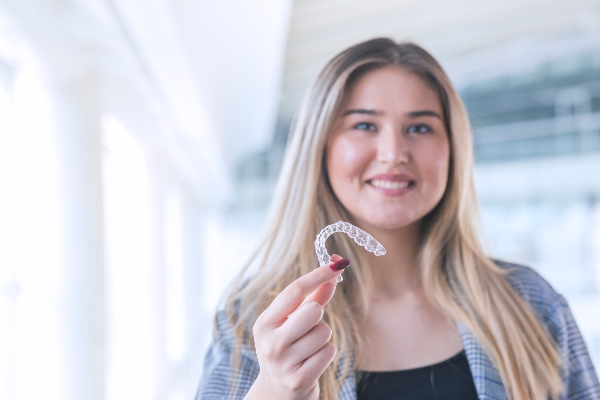Common Procedures offered by a Top Pediatric Dentist in Reston

The most common pediatric dentistry procedures include dental X-rays, routine dental cleaning procedures, fluoride treatment, dental sealants, dental fillings, crowns, and early orthodontic care. Of course, all pediatric dentists offer their unique set of services, so it is important to ensure a pediatric dentist provides the service your child needs before visiting their office. However, most top pediatric dentists offer all or most of these services.
Common pediatric dentistry procedures
It can help to understand pediatric dental procedures before your child’s first visit. Here is a closer look at each service.
Pediatric dental X-rays
Pediatric dental X-rays are performed on the first visit with a pediatric dentist. There are various dental X-ray types, each of which provides a unique view of the patient’s teeth and periodontal health. The most common types of pediatric dental X-rays include bitewing, panoramic, periapical, and orthodontic. They can reveal several oral health concerns (and potential concerns), including dental cavities, impacted teeth, overcrowding, jaw complications, and more.
Routine dental cleaning
Routine dental cleanings are usually part of check-up visits. Dentists primarily perform them for preventive purposes. During a routine dental cleaning, teeth are scaled to remove plaque and tartar accumulation, which can develop even with the right oral care routine at home. The dentist will also clean the gum line to help prevent gum disease and other periodontal problems.
Fluoride and dental sealants
Pediatric dentists offer fluoride and dental sealants as preventive services. Much like dental cleanings, they help protect teeth enamel—the outermost layer of teeth. Fluoride, in particular, can help remineralize enamel after acidic attacks weaken it. Dental sealants similarly protect teeth. They are plastic coatings placed over the chewing surfaces of premolars and molars. (These are vulnerable areas of teeth.)
Tooth-colored dental fillings
A tooth-colored dental filling is a way to repair dental cavities (caries). Cavities form when enamel decays and leaves a small hole on one or more teeth. Tooth-colored fillings are minimally invasive and safe. They simply restore the morphology of the tooth and help protect against further decay and associated discomfort. Tooth-colored fillings are made of either a ceramic or amalgam material, providing the perfect balance between natural, aesthetic appeal, and strength. For further protection, silver fillings may also be an option.
Dental crowns
Dental crowns or caps cover a damaged tooth on all sides for the best protection possible. Top pediatric dentists may recommend dental crowns for severe cavities that a filling alone cannot treat. They may also be used after a baby root canal procedure (see below).
Perhaps more commonly, crowns repair chipped and cracked teeth. There are a variety of crown material options. Most notably, the material types include ceramic, porcelain-fused-to-metal, and metal-alloy. The location of the tooth and the severity of the damage may dictate which material your pediatric dentist recommends.
Baby root canal
A pediatric dentist may need to perform a baby root canal to treat severe decay or damage that extends to the root of a tooth. Also, this procedure treats severe tooth infections and dental abscesses. This procedure involves drilling toward the tooth’s root, removing damaged, decayed, or infected dental pulp, sanitizing the tooth, and filling it. As mentioned, a dental crown may be placed after a baby root canal procedure. Although more invasive, a baby root canal can often help prevent worsening concerns and prolonged tooth discomfort.
Early orthodontic care (phase 1 orthodontics)
Many top pediatric dentists also offer early orthodontic treatment, also called phase 1 orthodontics. This includes orthodontic services before all permanent teeth emerge fully. Common early orthodontic care treatments include space maintainers and palatal expanders. Early orthodontic care can help reduce the extent to which orthodontic care (i.e. braces, clear aligners) are needed later.
How to choose a top pediatric dentist in Reston
When choosing a pediatric dentist in Reston for your child, consider their services. In addition, to gain more information, read the online reviews from former clients to gain a better sense of the overall experience. It can also help to ask family members and friends that you trust about their experience with pediatric dentists in the local area.
Are you considering pediatric dentistry in Reston?
You can schedule a visit with our pediatric dentist in Reston by calling us or sending us a message today. We can answer your initial questions about treatment and find the right time for you and your child to visit our dentist and staff. We look forward to serving you.
Request an appointment here: https://www.orthodonticprecision.com or call Precision Orthodontics & Pediatric Dentistry at (703) 391-8800 for an appointment in our Reston office.
Check out what others are saying about our dental services on Yelp: Pediatric Dentist in Reston, VA.
Recent Posts
Cavity treatment for kids can help children maintain their long-term oral health. Tooth decay in children can lead to discomfort, infection, and long-term dental complications if left untreated. Fortunately, early detection and appropriate pediatric dental care can prevent complications and support healthy oral development as children grow up.Cavities develop when bacteria in the mouth feed…
An emergency pediatric dentist is a parent’s go-to resource when unexpected dental issues arise. From accidents to sudden pain, these dental providers offer specialized care to restore children’s oral health and comfort quickly. Understanding their role and the treatments they offer empowers parents to handle dental emergencies with confidence, ensuring prompt, compassionate care for every…
Calcium and vitamins have important pediatric dental benefits for your child. They help their bones grow and develop, as well as help with their tooth development. Besides brushing and flossing regularly, children also need to have balanced nutrition for healthy teeth and gums. This article covers the importance of calcium and vitamins, so parents can…
Dental X-rays are essential parts of a pediatric dental visit. As a diagnostic instrument, an X-ray is used by pediatric dentists to uncover and highlight problem areas in order to investigate them further and develop an effective treatment plan. Continue reading to know when the dentist might recommend digital X-rays during a dental appointment.Pediatric dentists…


